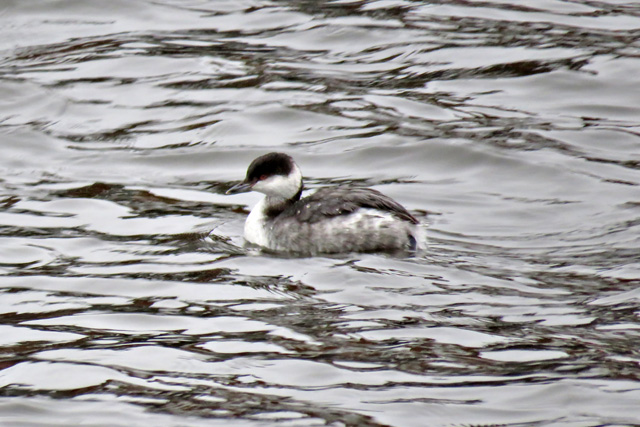A couple of nice patch finds this month have included an Iceland Gull on the 8th and a Snow Bunting on the 10th. Newbiggin is also great to see Med Gulls.
Gary Storey


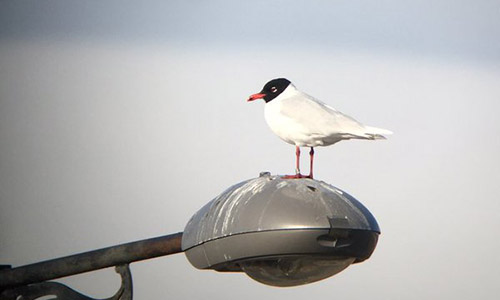
My wife and I identified a Red-necked Grebe on Farnley Ponds on March 6th around noon. We saw the bird again the following day on March 7th.
Unfortunately it remained rather distant which made it more difficult to photograph. Farnley Ponds is just south of the River Tyne between Corbridge and Riding Mill. The ponds can be partially viewed from the public footpath that previously joined the villages, although the more western portion of the path has been washed away by the extensive landslip that closed the railway line for several weeks. It has not yet been re-instated. However the path beside the ponds can be accessed from Riding Mill to the east. The path goes between the ponds and the River Tyne.
Phil Adams
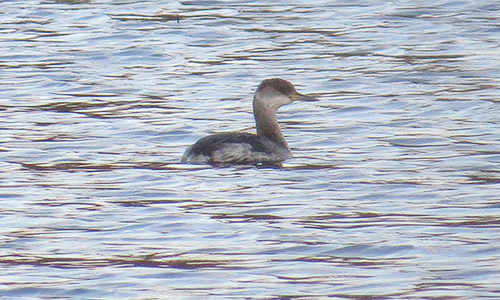
A few birds from Wallington Hall – National Trust.
Marsh Tit and 6+ Brambling were the highlights.
There was also two Red Squirrels.
Jack Bucknall
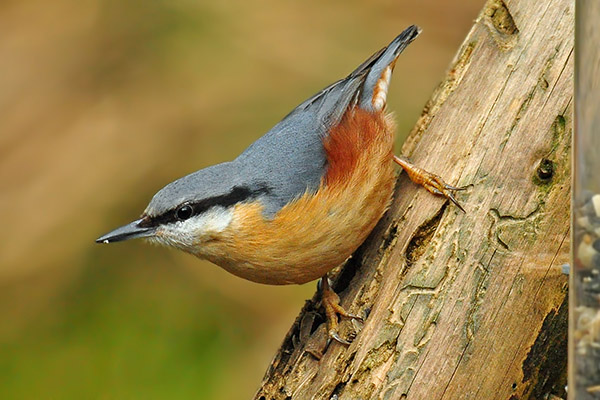
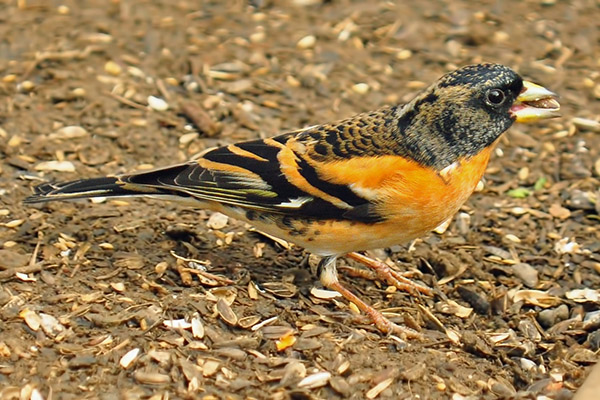
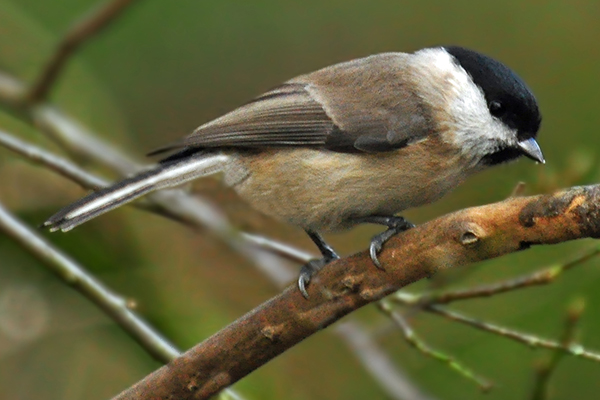
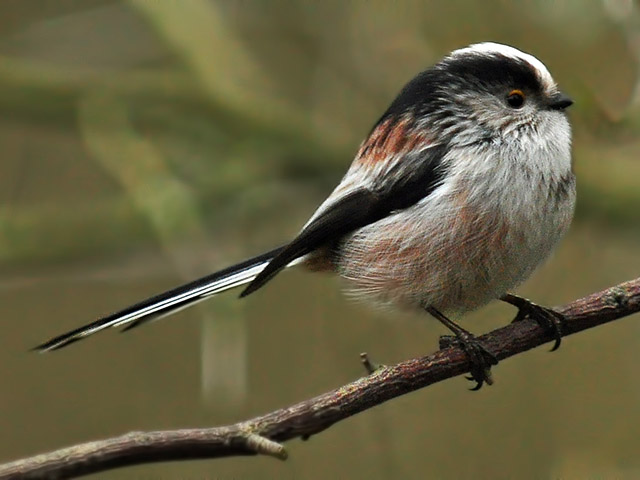
There were twelve Mediterranean Gulls at Newbiggin today, which included this one, which was ringed as an adult at Great Yarmouth in Nov 2013.
An updated version of my report Origins of Some Mediterranean Gulls in Northumberland is available to view in the Bird Notes section of this website. This 5th update includes new sightings from 2015/16 and peak Mediterranean Gull numbers from Newbiggin for the past year.
Steve Holliday
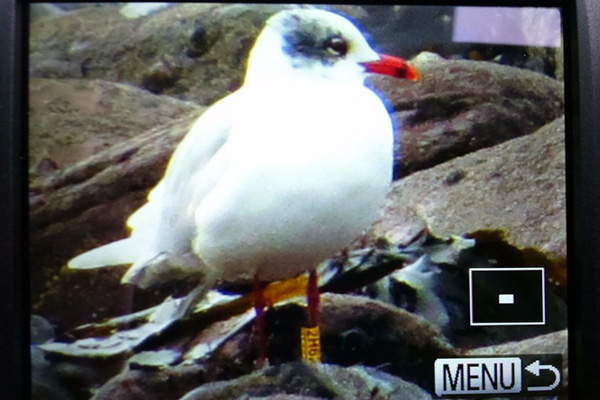
Northumberland’s long staying Long-billed Dowitcher remains at Cresswell Pond, with occasional visits to Druridge Pools.
Long-billed Dowitchers are a rare but regular visitor to Western Europe. They breed in the far north of North America and Eastern Siberia.
The short video clip below is by Jonathan Farooqi
There have been a few records of Brambling during February. Up to seven were in Howick Village on the 7th, whilst 30 + were in trees adjacent to a stubble field west of Knowesgate (NY978850) on the 11th. Singles have also been reported from Holywell Pond. It will be interesting to learn if more have been recorded. A full comprehensive round-up of member’s records will be published in the February club bulletin.
Seven of 30+ Brambling west of Knowesgate by Peter Fletcher
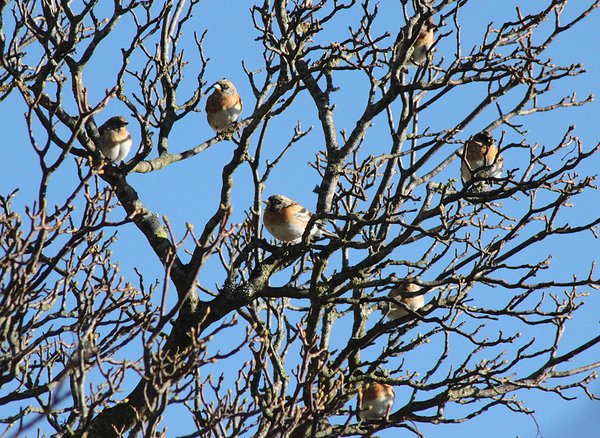
Killingworth Lake has been particularly popular this winter with birders enjoying Smew, Scaup and Goosanders. Over recent years the site has developed enormously and now is home to a greater variety of birds. I really enjoy watching the Cormorants and Grey Herons which can regularly be seen enjoying the facilities.
As spring starts to appear on the horizon, many birds are starting to prepare for the coming breeding season. There are Mute Swans with their mighty territorial displays and passionate love heart embraces.


And…
Goldeneyes with their equally artistic and dramatic courtship displays.
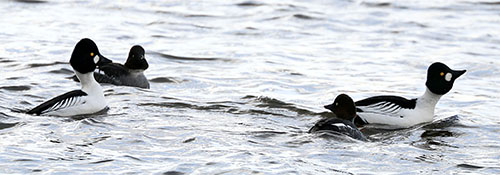
Life at Killingworth Lake is becoming so exciting, I can’t wait for my next visit especially as the Great Crested Grebes are arriving and it will not be long till the Common Terns can be heard announcing their arrival. Paul’s hoping for another Black Tern, but it was back in the early 90’s when he recorded his last at this site. He always makes an effort to watch for them, just in case.
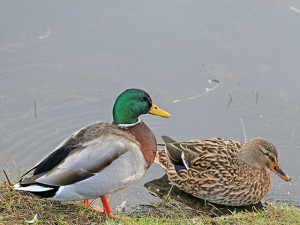
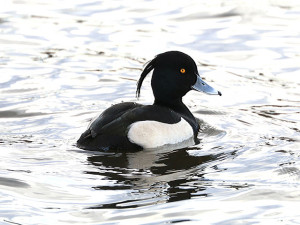
Adriana Buskin
The weather this year continues to bring storms, which have already left their mark on our region. Many important nature reserves have been affected, including Big Waters, Gosforth Park, Prestwick Carr and Swallow Pond; all have suffered flooding. One of our counties most affected sites, Allen Banks, has been forced to close.
National Trust – Allen Banks and Staward Gorge
“Over the last month severe weather has devastated Allen Banks and Staward Gorge resulting in many destabilising landslips, the uprooting of large trees, erosion to the river bank and the much loved wobbly bridge being washed away. Over the coming weeks our ranger teams will be monitoring the damage and we’ll keep you updated as we have more news. We do hope to reopen as soon as possible but at the moment we can’t say when that will be.”
For more information about Allen Banks and Staward Gorge please visit the
National Trust’s Website
Birders are advised to take care whilst birding and to wear suitable footwear, especially as many access paths to the counties reserves are still water logged.
A Water Rail exploring a flooded Prestwick Carr by Peter Fletcher.
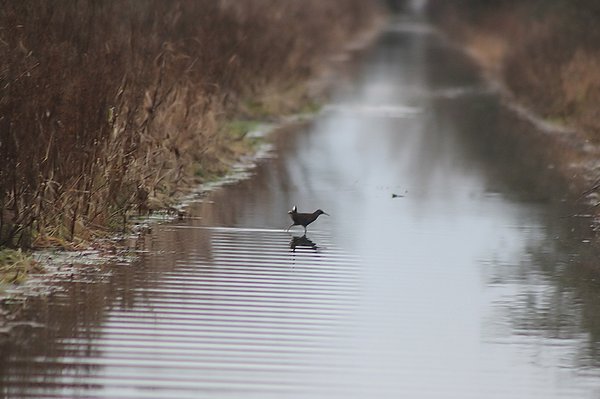
First stop on 10th, Tynemouth where the wintering Black Redstart showed very well in the sunshine, feeding well. Here too was a Grey Wagtail, which was flycatching , jumping repeatedly into the air and three Rock Pipits. A passing Skylark flew overhead. Then the resident Feral Pigeons took to the air in panic as a Peregrine appeared, then landed on the cliffs. Later it flew out again and then departed. A female Sparrowhawk then flew in to land on the cliffs , looking somewhat out of place. Around a dozen Fulmars were on the cliffs, showing early signs of spring fever, pair bonding and flying together in the good conditions, landing at last year’s nesting sites. Five Purple Sandpipers fed along the shoreline here.
Heading a short way north to St Mary’s Island next, where the incoming tide pushed the many feeding waders to within a few feet of me in the North Bay. Seven Purple Sandpipers were among the feeding Sanderling(69), Dunlin(12), Turnstones(24), Ringed Plover(14) and a single Knot.One Sanderling was managing with difficulty with only one leg. Seven or eight Rock Pipits were an increase on recent numbers. A pair of Kestrels and a female Stonechat perched on a fenceline and a Grey Wagtail flew over, calling. The fine weather prompted two or three Skylarks to sing and 50 Oystercatchers and 67 Curlew fed on the nearby mini-golf course.
The following day continued fine and sunny and a run up to Newbiggin saw five Mediterranean Gulls in the car park, giving great views and calling frequently. Down to Killingworth Lake and the Smew remained on the small lake with several Gooseanders and Goldeneye.
The 12th and a Smew, probably the same bird, was at Holywell Pond (there have been two seen in the area). A Song Thrush and Mistle Thrush could be heard singing.
At Tynemouth, the Black Redstart remained in it’s usual area. St Mary’s again, and fine views of a Short eared Owl hunting the fields, perched on a fence, then pouncing on prey. Around 900 Golden Plover took to the air from the rocks along the shore. An increase in the 300 of the 10 th. though the flock move to and from their feeding areas in fields to the west.
A.S.Jack
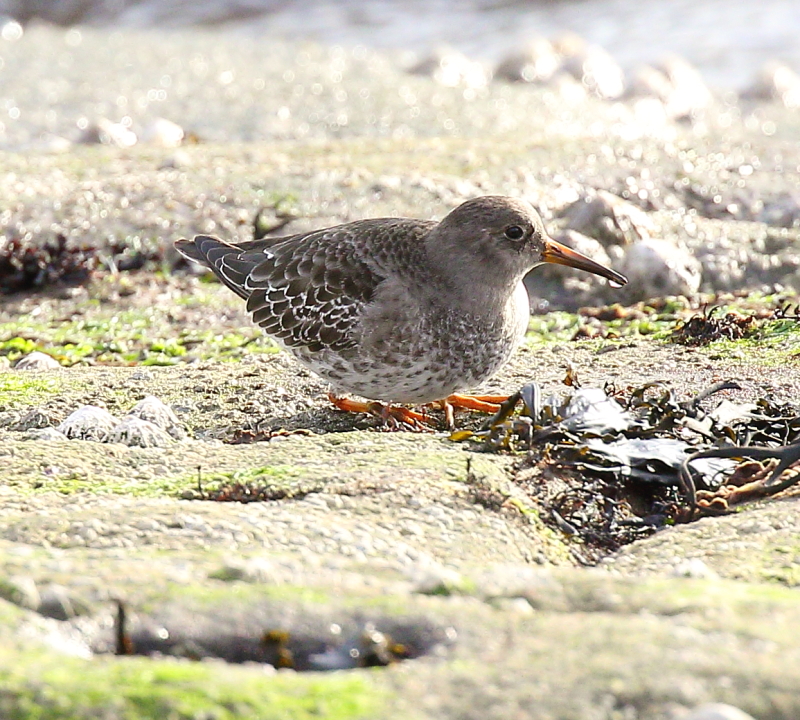


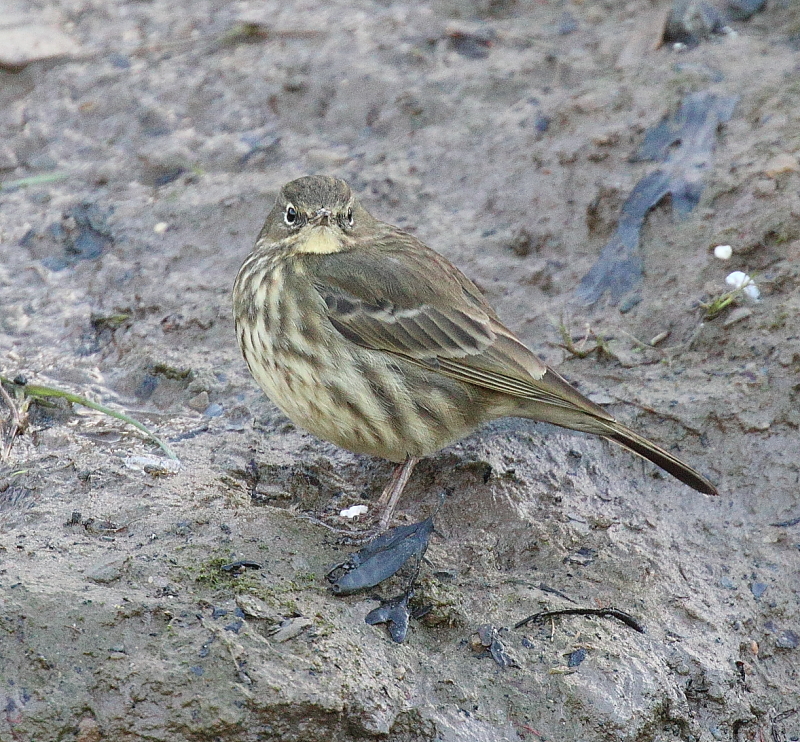
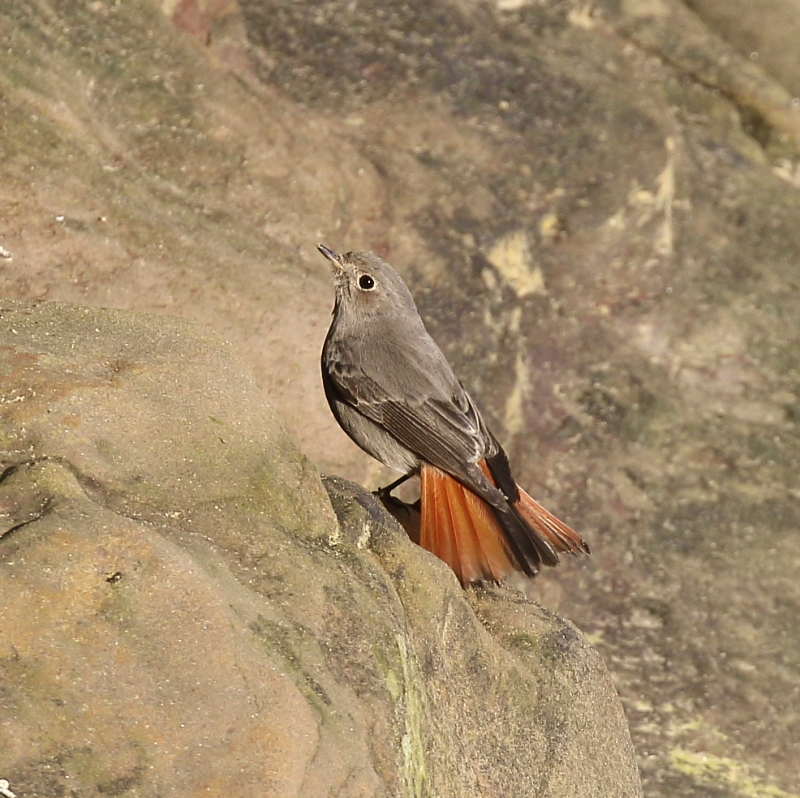
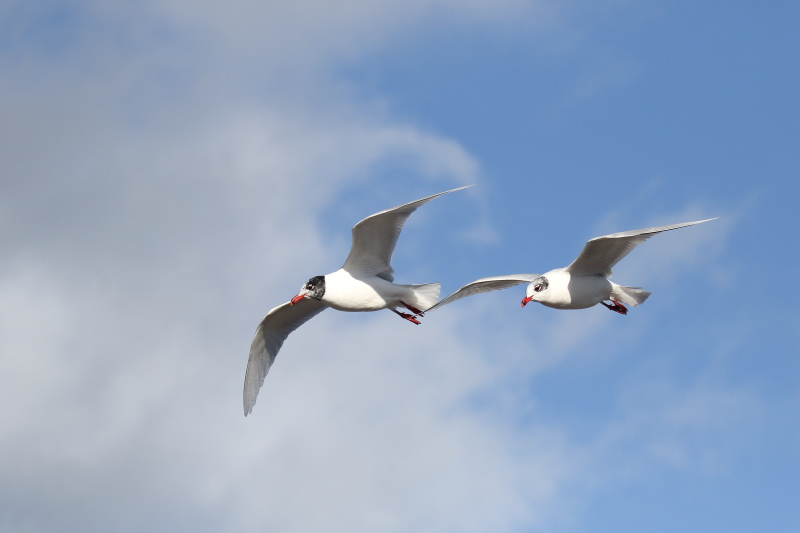
Killingworth Lake comes alive in the winter with Goosander and Goldeneye entertaining local birders. Numbers of Goosander have been particularly high this winter, with up to 26 noted so far this month.
Many birders have enjoyed great views of the visiting Smew. There has also been amongst the Tufted Duck and handful of Pochard a few Scaup over the past few weeks. Some have been adults, some immature males, but there have also been a couple of hybrids. Their parentage is open to debate.
Reports of a Black Scoter towards the end of January/early February at Stag Rocks, Bamburgh are now thought to relate to a bird which is more likely to be a hybrid individual. As the weather calmed the bird opted to come closer to the shoreline and birders were lucky to secure better views.
A full comprehensive round-up of member’s records during the last two months can be found in the club bulletins. If you are not a member, and you would like to benefit from regular indoor meetings, field trips, access to the NTBC Seawatching hide at Seaton Sluice and the flagship annual report which is free to members each year please visit our Join Page.
An Immature female Scaup at Killingworth Lake on the 10th February by M.P.Frankis

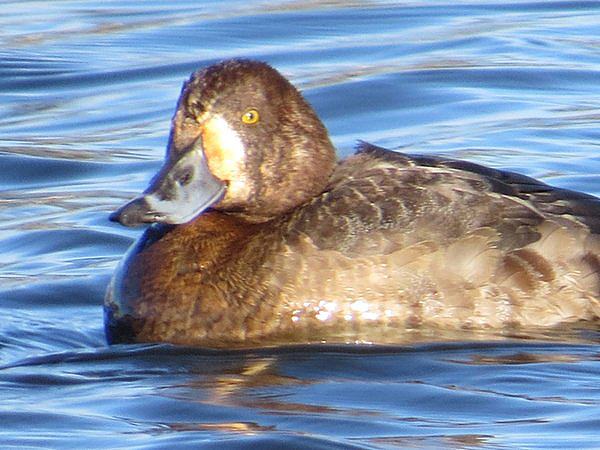
Birders are continuing to visit the small village of Birling Carrs in Northumberland to view a small group of Redpolls, which includes a single Coues’s Arctic Redpoll, together with two or more Mealy Redpolls and up to 30 Lesser Redpolls.
Birling Carrs is north of the village of Warkworth on the A1068 and is separated from Warkworth by the River Coquet. There is a car park at Warkworth beach, at the end of the road from the junction immediately north of the bridge, and the village. If you then walk two fields north; along the east edge of the golf course, the Redpolls can be seen at times perched on a fence/some bushes enjoying some seed which has been provided.
Visitors are advised not to enter the golf course or fields and keep to the paths.
Since 2001 the ‘The British Ornithologists’ Union (BOU)’ have classified our Redpolls into three species; Lesser Redpoll, Mealy Redpoll and Arctic Redpoll as a result of scientific studies. Most recently, genomewide analyses however found differences in gene expression but no genetic divergence leading to further discussion on Redpoll Classification.
Whichever the classification, Northumberland is very lucky to have the opportunity to view these three races together and so easily. Fingers crossed they stay around for a little while longer.
I am a newcomer to the club and I live close to Killingworth Lake. I have been regularly observing the visiting Smew. Other recent visitors have included two Scaup with a group of up to ten Goosander.
Whilst on the Quayside at Newcastle last week I saw a Cormorant with rather splendid (IMHO) filoplumes. I liked the almost Red Indian head dress look….
Adrian Wilson
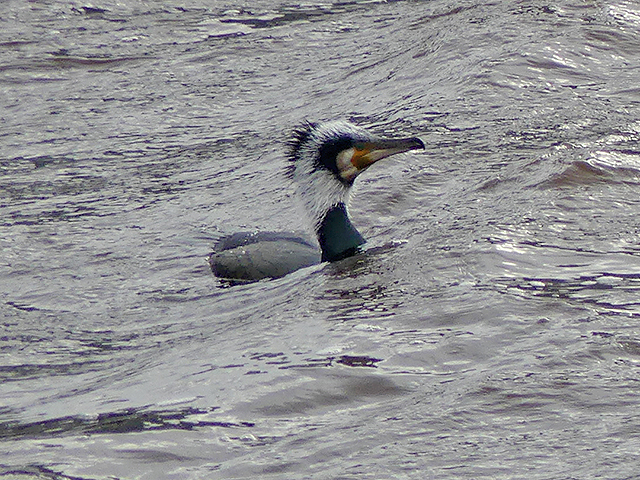
A local redhead Smew is still entertaining birders at Killingworth Lake, with occasional outings to Holywell Pond, Rising Sun Country Park and the Big Waters Nature Reserve.
A winter visitor from Scandinavia and Russia which is sadly uncommon in our county, so a long staying individual is treasured, especially by the local birders. Many birders are wishing for a male to visit. Fingers crossed.
A seaduck fossil from the Middle Miocene shows that birds similar to Smew existed up to 13 million years ago.
The short video clip below is by David Dinsley – naturenortheast.co.uk
This Saturday I felt lucky to enjoy excellent views of two Kingfishers, which were happily fishing between Richardson Dees Park and Wallsend Burn. They caught lots of fish. The parks at Wallsend are much nicer since the 7 Million restoration, with even the local Mallards and Moorhens looking a lot smarter. I also regularly record Grey Wagtail and Mistle Thrush. Both were on show today.
Nearby at Wallsend Green, six Redwing were feeding on the green fields with some Mistle Thrush. I love Redwing and the Wallsend-Walker wildlife corridor is popular every year with these handsome wintering thrushes.
Paul Buskin
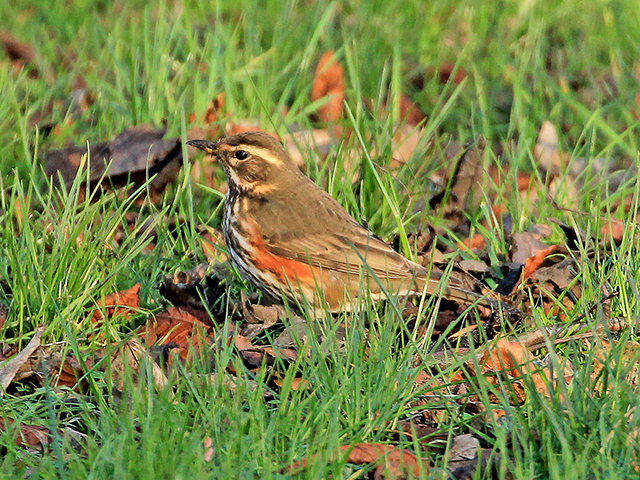
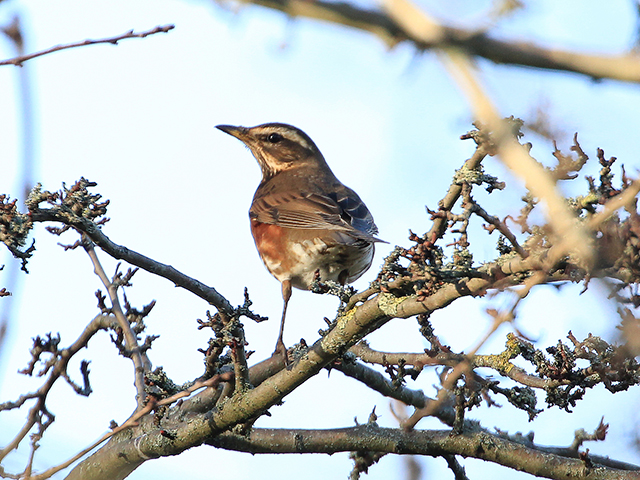
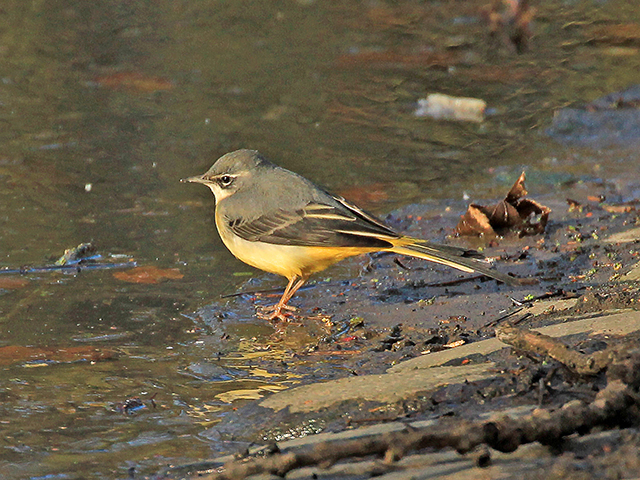


There has been reports of a drake Black Scoter enjoying the company of a group of Common Scoter over the past few days off Stag Rocks at Bamburgh, Northumberland. The recent stormy weather has made it difficult to view this rare visitor. Elsewhere Bean and White-fronted Geese have been again noted at Holywell and Druridge, whilst a Slavonian Grebe continues to enjoy the QEII Country Park. A Black Redstart has also again been visiting Tynemouth at the base of the Pier and a drake American Wigeon remains at Grindon Lough.
On the last day of the month a couple of Waxwings were found with some thrushes on the road between Druridge Pools & Widdrington. There has been very few Waxwings reported in the county so far this year.
The long staying special guest; a Long-Billed Dowitcher is still loving its winter at Cresswell Pond.
A full comprehensive round-up of member’s records during the last two months can be found in the club bulletins. If you are not a member, and you would like to benefit from regular indoor meetings, field trips, access to the NTBC Seawatching hide at Seaton Sluice and the flagship annual report which is free to members each year please visit our Join Page.
A view of Bamburgh Castle and Stag Rocks at Bamburgh,
Northumberland by Adriana Buskin
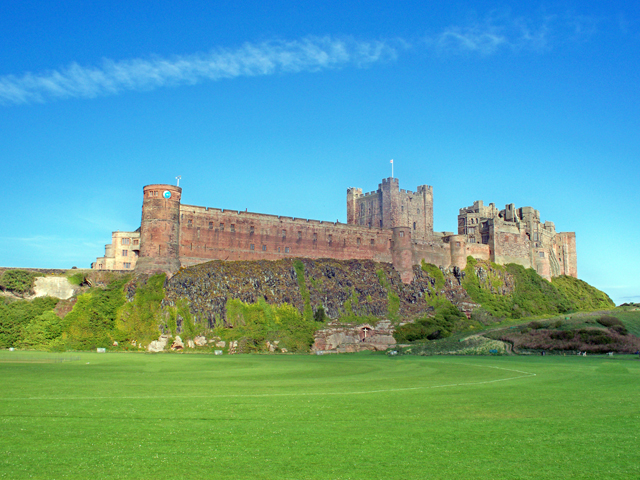
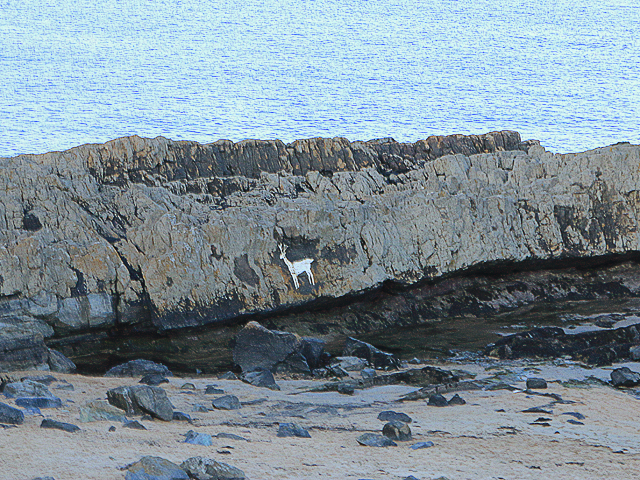
After some lengthy deliberation, close observation and with the help of some reasonable photographs, it now seems safe to identify the ‘Northern’ Redpoll at Birling as a Coues’s Arctic Redpoll. This bird has been present since the New Year with a flock of 3+ Mealy Redpolls and 22 Lesser Redpolls in a seeding game crop next to Warkworth Golf Course. Originally found by W Rutter who was on a first outing of 2016 to his local patch. Not a bad start to the New Year!
Stewart Sexton

An early run up the quiet A1 saw me looking for a reported large Yellowhammer flock near Mousen,Belford. Stubble fields had held over 100 birds last month, but with the stubble now cut low, only 25 or so remained as the birds dispersed. On to Budle, where low tide, with exposed mud held a great many feeding birds. Lapwings, Knot, Dunlin, Redshanks , Golden Plover, Grey Plover, Bar tailed Godwits and Curlew were all present in good numbers. Wildfowl were well represented with 27 Barnacle Geese among several hundred Pink Feet and Grey lags on the northern edge of the bay. At least 500 Brent Geese slightly apart from these. Wigeon and Teal in large groups and around 200+ Shelduck counted. A few Red breasted Mergansers fed in channels.
On up to Holy Island now, via Elwick where a large House Sparrow flock remained from my last visit in November. The hedgerows here held some Chaffinches,Linnets, a few Yellowhammers and Reed Buntings, and a Song Thrush.
Holy Island causeway was extremely quiet, bar a small flock of Twite and a few Eiders and Curlews. The island itself quiet too, with remarkably these days, only 12 cars in the main car park! A scan from Chare Ends revealed a female Merlin perched , preening on a gate-post and a hunting Short eared Owl, a species present this winter in the county in good numbers. A pair of Stonechats perched on a nearby bush. The mud-flats here held the usual large Golden Plover flock in their favourite spot, with several hundred Bar tailed Godwits feeding along the edge of the incoming tide. Unusually, no Brent Geese here today.
Down the coast at Stag Rocks, 18 Purple Sandpipers was a low count for the site. However, a high tide roost at Seahouses held an estimated 160 birds,which when a photograph was later studied, revealed actually 189. With them were 37 Turnstones and 21 Oystercatchers. 4-5 Rock Pipits here and a very tame Song Thrush.20+ eiders in the harbour. Then at a roost at Beadnell which always holds Grey Plover, sure enough, 24 were present, with 22 Bar tailed godwits and 17 Purple Sandpipers.
A.S. Jack
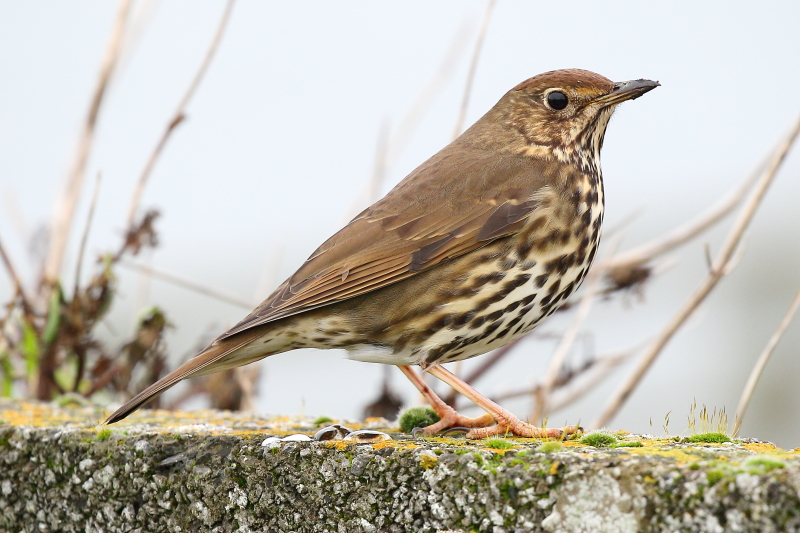
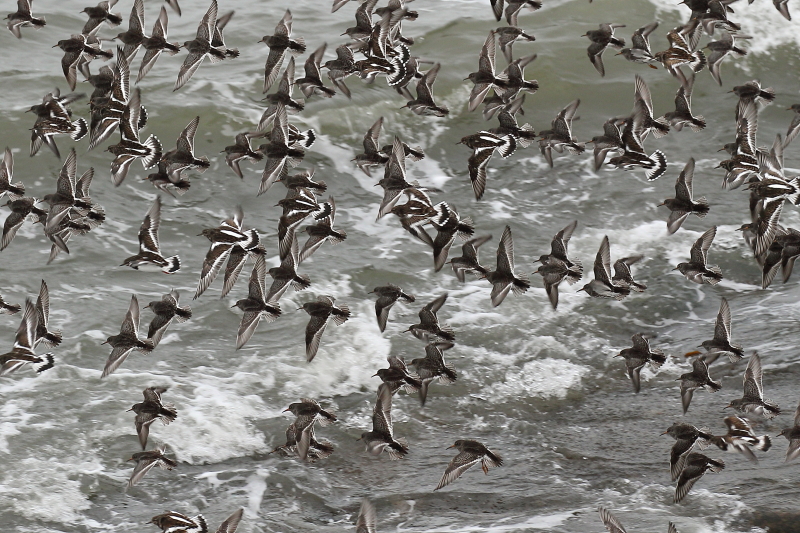
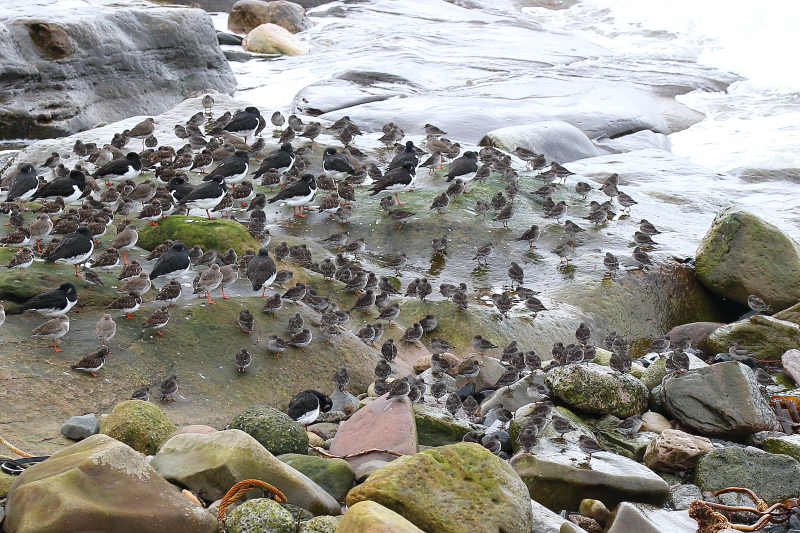
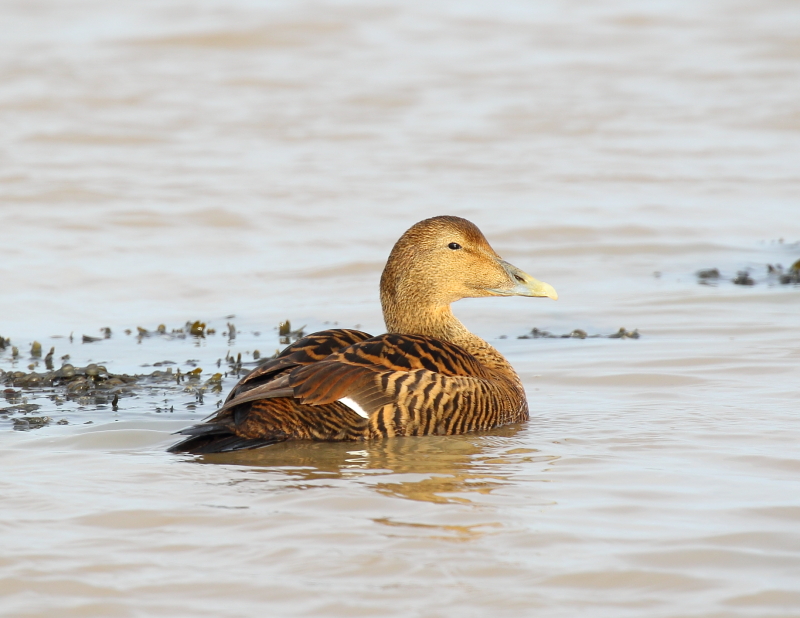
As the weather starts to become more wintery, more Geese have appeared, with sightings of White-fronted Goose at Backworth and Holywell, and a single Bean Goose at Holywell on Sunday 17th.
As temperatures dropped below freezing, the pond froze at Holywell apart from a small section in front of the public hide, close to the island. Here a Mandarin which has been present for the past couple of weeks, remains, resting in front of the public hide.
Photos below by Chris Barlow.
A Tundra Bean Goose and a Male Mandarin from Holywell Pond

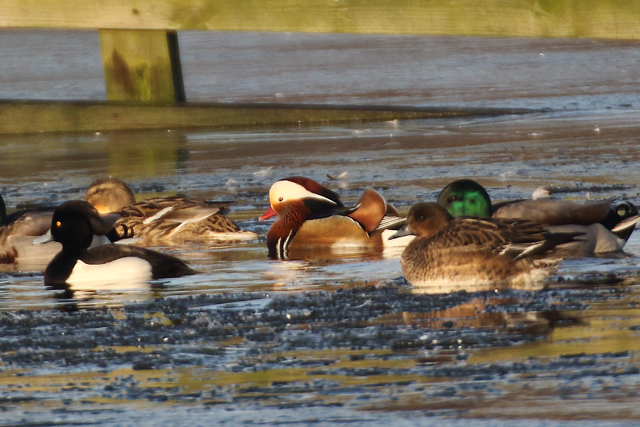
There has been regular sightings of Kingfisher over the past twelve months at a variety of sites throughout the county. Over the past week, birds have been on show at Holywell, Swallow Pond, Wallsend Dene, Leazes Park and Jesmond Dene.
Photo below by M.P.Frankis
A Kingfisher at Jesmond Dene on the 17th January
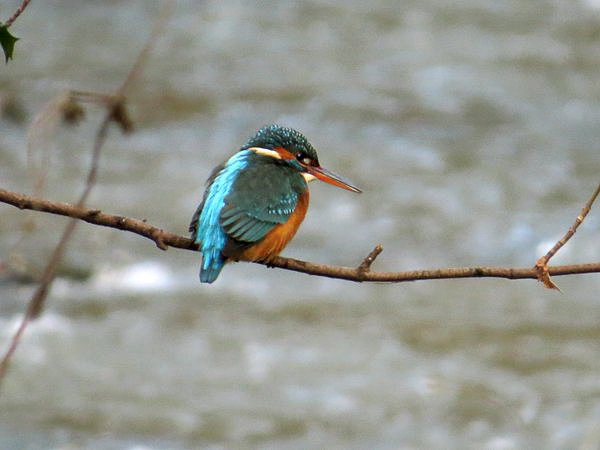
Over the past couple of weeks, there have been sightings of Slavonian Grebe at East Chevington, Holywell Pond and the Royal Quays, North Shields. Clothed in their winter plumage, they can resemble their Black-Necked cousins, but with white cheeks. Often these are viewed through a telescope, in cold coastal winds, so it is a nice luxury to view these attractive Grebes in a tamer environment and at close quarters.
Photo below by Mike Hodgson
A Slavonian Grebe at the Royal Quays, North Shields on the 14th Jan
